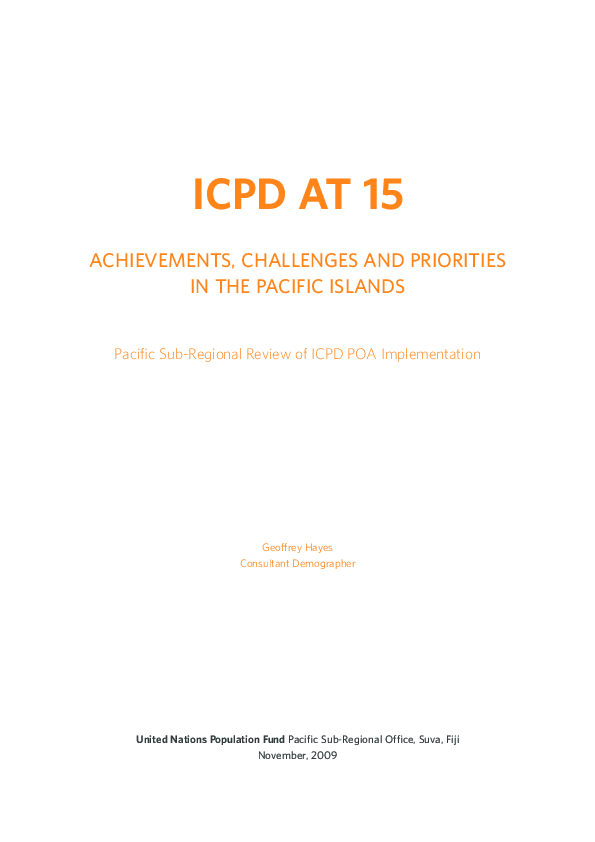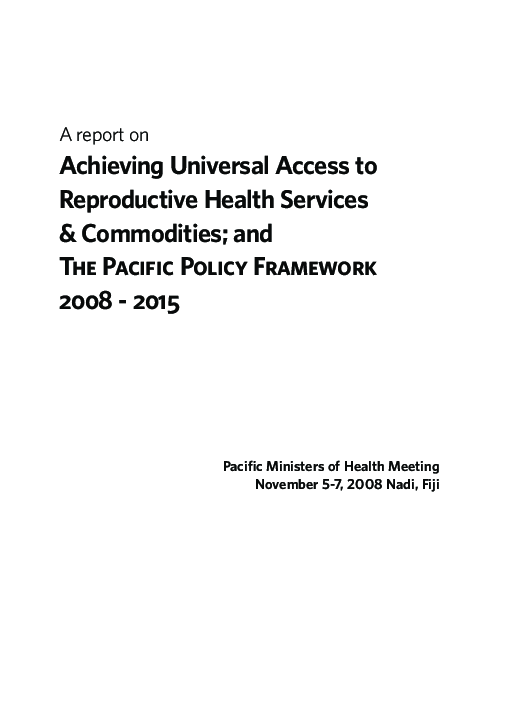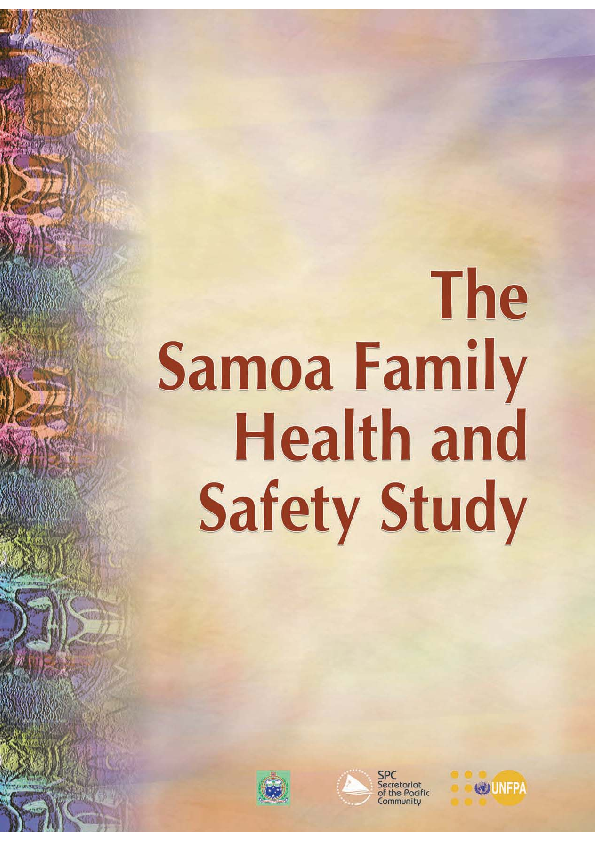You are here
New Releases

ICPD at 15
There is much quantitative evidence that Pacific Island countries have made progress toward achieving the goals and objectives of the ICPD POA over the past 15 years, but the pace and extent of progress has varied greatly between countries. The countries that have reached or are on track to achieve the ICPD goals and MDGs relating to population are generally the smaller countries that retain a historical relationship with a former or current metropolitan power and/or have found opportunities to participate in overseas labourmarkets. For the most part these are the smaller countries of Polynesia and Micronesia, as well as Fiji.

Achieving Reproductive Access to Reproductive Health Services & Commodities; and The Pacific Policy Framework 2008 - 2015
Reliable access to contraceptives and other commodities is a fundamental requirement for reproductive health. Yet thousands of women and men in the Pacifi c go without these essentials, leaving them vulnerable to unwanted pregnancy, sexually transmitted infections including HIV and the risk of childbirth without basic equipment or medical supplies. While the need for reproductive health products is rising, donor support is declining. During the 1990s, governments and individuals provided 60 per cent of the costs of contraceptives worldwide, while donors covered 40 per cent of the costs. Today, donor support has declined to around 27 per cent of the total.”

The Samoa Family Health & Safety Study